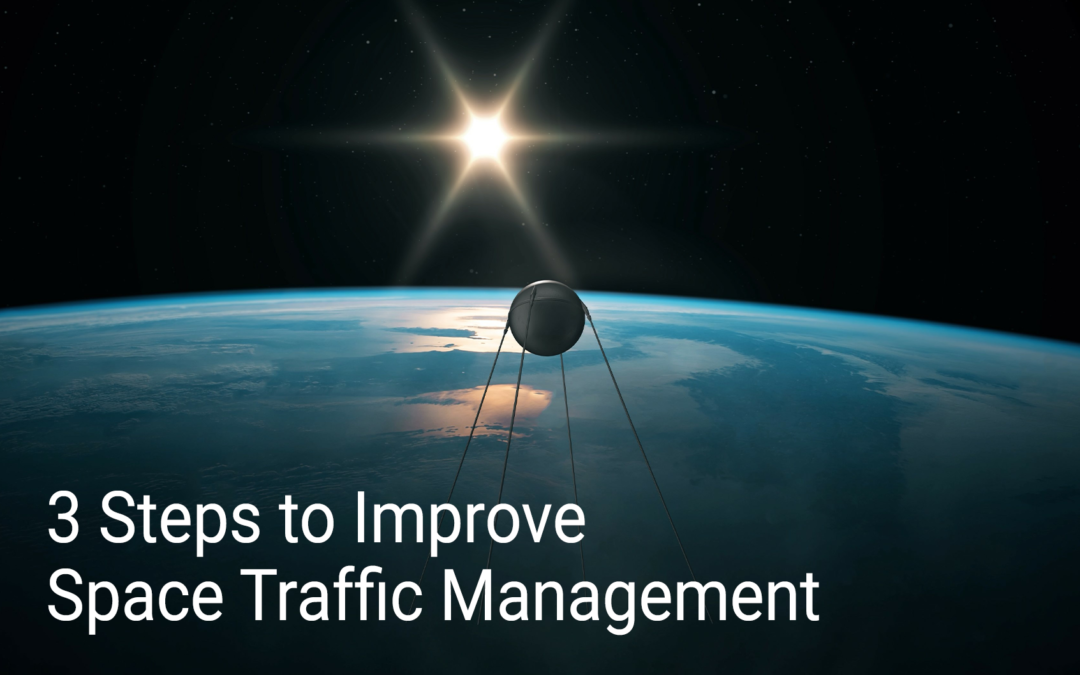While the Space Age may have begun when the Soviet Union launched Sputnik 1 on October 4th, 1957, it is only now getting to the point of proliferation, some 65 years later. There are currently around 6,900 functioning satellites in space and this is set to rapidly increase over the course of this decade. According to a recent Euroconsult report, during the period up to 2031, on average over 2,500 satellites will be launched every year. This is equivalent to seven satellites being launched every single day. You don’t have to be an astrophysicist to appreciate the fact that as space becomes ever more congested, the probability of collision is only going to increase.
A collision between a satellite and another space object has the potential to not only cause significant damage to the satellite but could also add thousands of new pieces of debris to Earth’s orbit which is obviously going to exacerbate the problem. If space activity is to remain sustainable for the long term, the industry requires much better space situational awareness (SSA) and space traffic management (STM) than is currently in existence. So what do we, as an industry, need to do to make this happen?
There are many things that will help but for the purpose of this blog, we’ll focus on 3 important steps that will move us in the right direction.
1. Governments to be more proactive
Considering the number of players now operating in the space environment, and the impact that a collision would have on the industry, governments around the world have been slow to react to the need for better STM. Governments need to be more proactive in developing regulation around management of the satellite life cycle to ensure that they are operated safely, and in a responsible and sustainable way. In addition, governmental bodies have an important role to play not just in terms of regulation, but also around development, coordination, funding provision, and even to encourage data sharing.
The SDA is excited to work with the US Department of Commerce’s Office of Space Commerce as part of their pilot project to provide mission assurance spaceflight safety to select spacecraft in the Medium Earth Orbit (MEO) and Geosynchronous Earth Orbit (GEO) regimes. We hope that this pilot paves the way to a strong future collaboration between government and commercial operators for improved safety of flight for the entire community. The pilot project aims to demonstrate the capabilities of U.S. commercial SSA data products, analytics, and services to provide holistic spaceflight safety services. In addition to providing accurate predictive positional knowledge, planned maneouvres, and spacecraft characteristics, the SDA will provide feedback obtained from commercial satellite operators on the usefulness of the service provided.
2. Improved data availability and data fusion
Functioning satellites currently in orbit around Earth are of course not the only cause of crowding in space. There is also thought to be approximately 2,880 non-functioning satellites, as well as an tens of thousands of space debris objects capable of causing significant damage. As space traffic increases, the amount of debris in space is likely to also increase. Without more accurate estimation of the probability of collision, satellite operators will be faced with an unmanageable number of false alerts. This is why data is more important now, than it has ever been.
However, to establish more effective systems for SSA and STM, we need more than just data. There is a strong argument for using multi-source data fusion coupled with advanced analytics. In 2001, the SDA worked with COMSPOC to carry out a data fusion experiment combining the observation and operations data from a range of sources. The experiment demonstrated that by fusing governmental, commercial, and satellite operator data, and by using advanced data processing techniques, predictive positional accuracy can be significantly improved.
3. Closer collaboration between all interested parties
Understandably, data sharing can be politically, and even commercially sensitive. Overcoming these challenges will only be achievable if there is greater collaboration between all players. The issues of space congestion, space safety and space sustainability are relevant to each and every space user. Creation of an effective STM system that benefits all space users will only be possible if there is a much higher level of collaboration between all stakeholders. The sheer scale of the task at hand requires a collaborative approach in terms of data sharing, funding, development and ongoing maintenance.
Steps in the right direction
There is no doubt that creating an effective, fit for purpose STM system is a complex task, and this is why progress to date has been slow. STM is a global issue and it’s time for governments around the world need to work in a more proactive way. This approach needs to be combined with increased availability of data for multi-source data fusion, and a high level of collaboration across all stakeholders. These actions will not solve the problem but are all important steps in the right direction.

